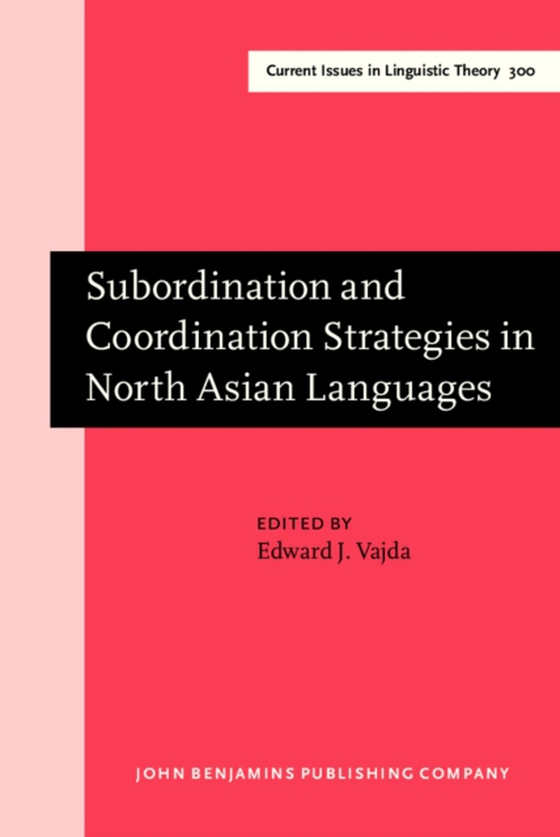
Subordination and Coordination Strategies in North Asian Languages e-bog
1094,16 DKK
(ekskl. moms 875,33 DKK)
Across North Asia, complex sentence formation patterns display an unusually high prevalence of suffixed relational morphemes used to convey subordination. Suffixal subordinators occur in a variety of genetic groupings, most notably Samoyedic, Turkic, and Tungusic, but also in some of the region's language isolates, such as Ket and Ainu. No general study has surveyed complex sentences across Nor...
E-bog
1094,16 DKK
Udgivet
27 november 2008
Længde
241 sider
Genrer
2B
Sprog
English
Format
pdf
Beskyttelse
LCP
ISBN
9789027290946
Across North Asia, complex sentence formation patterns display an unusually high prevalence of suffixed relational morphemes used to convey subordination. Suffixal subordinators occur in a variety of genetic groupings, most notably Samoyedic, Turkic, and Tungusic, but also in some of the region's language isolates, such as Ket and Ainu. No general study has surveyed complex sentences across Northern Eurasia and the Pacific Rim, an area noted both for its complicated web of language contact phenomena and its long-established genetic divisions. The 14 chapters in this volume survey synthetic and analytic methods of subordination and coordination. Much of the data reflect original fieldwork, and several chapters focus on critically endangered languages. Nearly every family or isolate in North Asia is taken into consideration, as are all major formal and functional types of complex sentence formation.
 Dansk
Dansk

